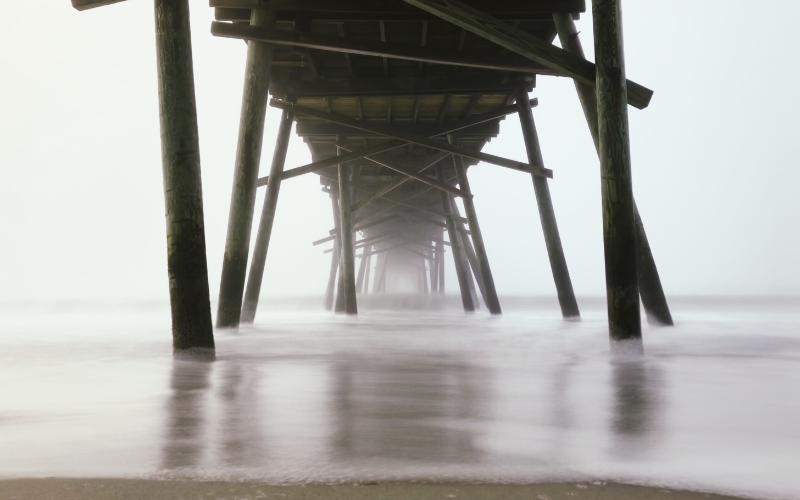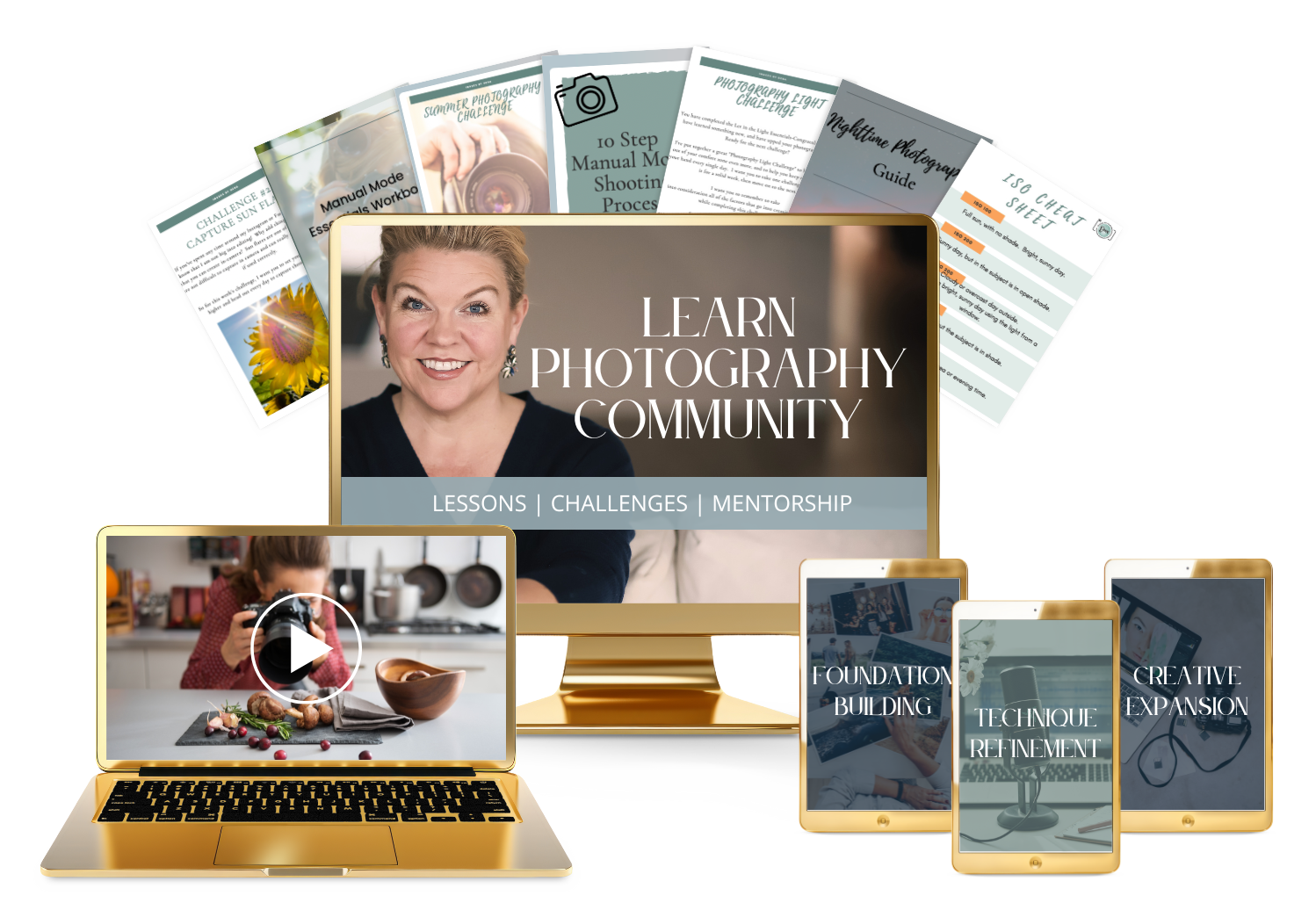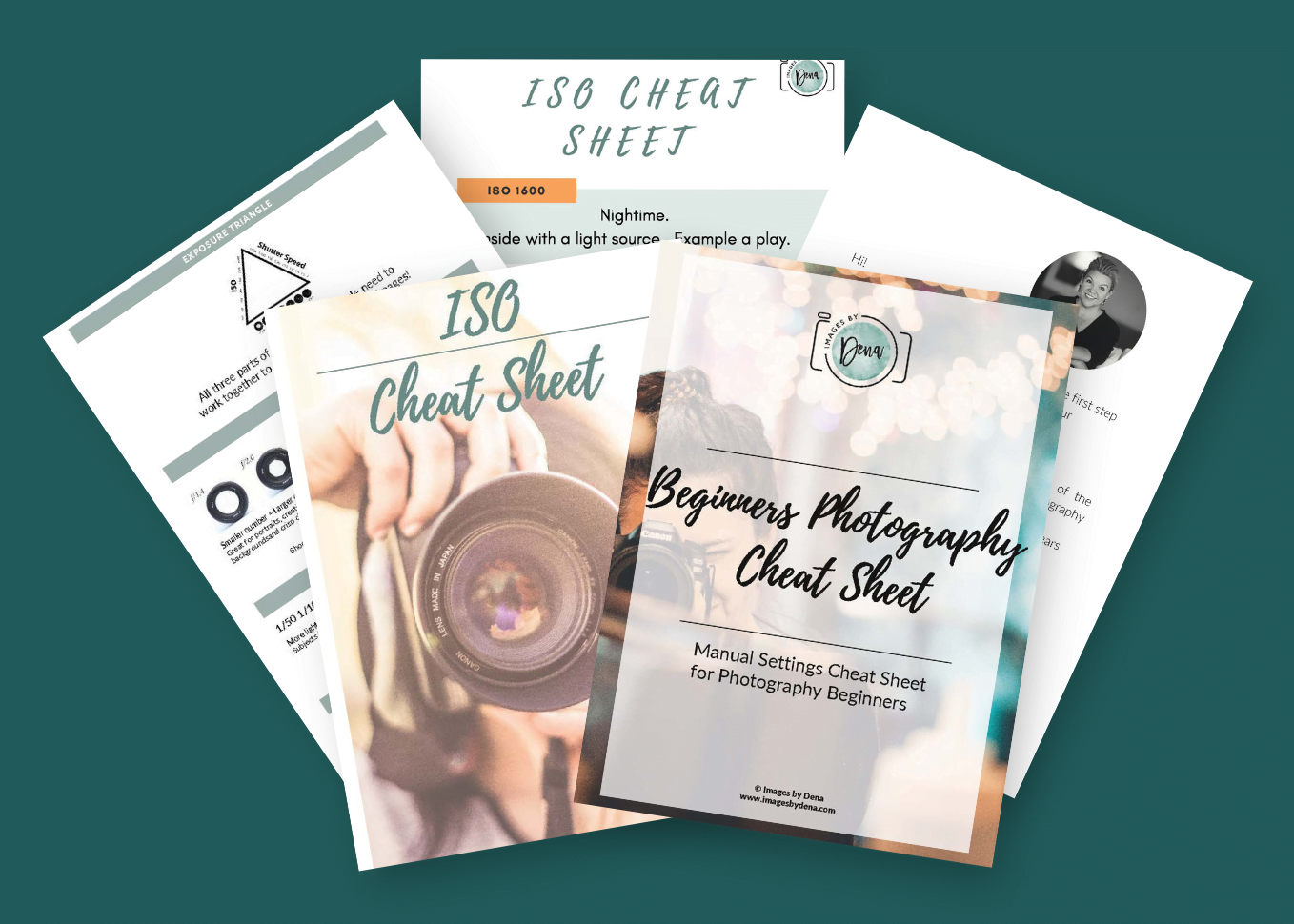
It doesn’t matter if you just bought your first camera and are learning the basics or are a seasoned photographer wanting to fine-tune your skills; you know that capturing beautiful and meaningful moments goes beyond just pointing and shooting.
In this blog post, we’ll explore ten photography tips and tricks to enhance your skills and help you create stunning photographs that tell a story.
Photography Tips and Tricks for Beginners
Understand and Master Your Camera
This is by far one of my most important photography tips.
Begin by knowing your camera inside out. There are so many choices in cameras and lenses, but mastering the camera, you have is the best starting point.
Explore its settings, modes, and features. Understanding the exposure triangle—aperture, shutter speed, and ISO—will empower you to control your shots creatively and hone your creative skills as a much more effective and inexpensive way to become a better photographer.
Understand manual mode and use it to get the best photos straight out of the camera. Why is understanding manual mode important in your photography? Understanding manual mode will immediately help you become more creative in your photography and change your photos from snapshots to professional, print-worthy images. That’s why it is one of the pivotal photography tips that I’ve included.

Make the Most of Natural Light
The word photo actually means “light”, and light is the most crucial factor in your photography. As a natural light photographer, I love night and utilize the available sunlight to my advantage whenever possible. Light is by far the most essential part of photography.
Natural light is simply: “the light from the sun.” It is available in most locations, and you can get stunning results in your photographs for no additional costs. It is free. It’s everywhere, easy to locate, and it costs nothing. If you have a camera and the sun, you are good to go.
Learn and understand light to get the best results in your photos, where you, as the photographer, should stand, and how to position your subject for the most flattering results.
Learn about light. Pay attention to shadows, direction and softness of light and plan to shoot during the most ideal light. Golden hours, when the sun is low in the sky, offer soft, warm light that adds depth and dimension to your photos.
The beauty of natural light can take your images to the next level and is hard to recreate with artificial light sources. The look of your photograph can change with the time of day, the type of light, and the angle you choose to use, creating any mood or style that you prefer.

Compose with the Rule of Thirds
Another one of my favorite photography tips is composition, and the rule of thirds may be my favorite.
Understanding the rules of composition is essential to improving your photography.
Use the rule of thirds to compose your images. The rule of thirds helps you avoid having your subject in the center of the frame. It says that you need to divide your image area vertically and horizontally into thirds, and the most important parts of your photo (the subject) should fall where the lines cross. Imagine your frame divided into a 3×3 grid, and place your subject along the intersections.
When photographing people, the eyes should fall on the intersecting lines. For landscapes, you want the horizon to fall into one of the thirds or have a main “subject” on the intersecting lines.
This technique adds balance and visual interest to your photos.

Experiment with Different Angles
Sometimes I go back through my old photos, photos when I was just starting, and I want to go back in time and do them all over! I swear that 98% of my shots were from the same exact position…standing straight in front of my subject!
Mix it up and shoot from another angle. Try shooting from above or below. If photographing kids or animals, get down on their level. Changing your perspective and your angles will make your photos look more professional.
Don’t be afraid to change your perspective. Shoot from different angles—high, low, or even from the ground—to create unique and engaging compositions that stand out.

Capture Candid Moments
My fifth photography tip and tricks is to capture candid moments.
Candid moments are an exciting practice of numerous components…patience, determination, and action and evoke emotion all while telling a story.
Capture photos without expectations. Work with the scene at hand and embrace it all while guiding and not posing your subjects. Lifestyle photography is all about capturing genuine emotions and interactions.
Encourage your subjects to relax and be themselves, resulting in authentic and heartfelt photographs. Or guide them to move, laugh, or do an activity they love, all while using numerous shots to capture the moment.

Master Depth of Field
My favorite of all photography tips is to master depth of field.
Have you ever looked at a photo and wondered how the photographer is able to blur the background of the photo? It’s not as hard as you think to blur the background in your own images. The blur of the background is all about the aperture and depth of field.
Many things control the depth of field-The aperture you have chosen, the distance between your lens and the subject, the distance between your subject and the background, the focal length of your lens, and other things.
When creating a shallow DoF, you want to make sure there is a large space between your subject and the background. It doesn’t matter if it’s a bush, a brick wall or a backdrop; pull your subject away from it, and get in close to your subject while keeping in mind composition.
Experiment with your photography and skills and experiment with depth of field. Aperture controls the depth of field in your images. A wide aperture creates a shallow depth of field, blurring the background and making your subject pop. A narrow aperture keeps more of the scene in focus. If you want to learn more about depth of field, make sure to check out my Beginners Photography Essentials Class.

Use Leading Lines
Be selective when you shoot and look for ways to utilize the rules of composition.
Leading lines are a basic rule of composition that draws the viewer’s attention to your subject in an interesting way. They can be strong, obvious lines, or subtle lines, and they don’t have to be straight, curved lines that lead to your subject work just as well.
Incorporate leading lines—like roads, paths, or even natural elements—to draw the viewer’s eye into the frame and guide them towards the main subject.
Lines are everywhere, and more than likely, you are already using them to direct your viewer to your subject.

Focus on Details
If you want your photos to stand out, this is one of the easiest photography tips to use…look for the details. Sometimes, the beauty lies in the details.
Work on capturing the small and seemingly insignificant details of what you are shooting. These are often the photos that are cherished and remembered the most years from now.
Avoid capturing the background; use details and textures to make your photos pop. Zoom in to capture intricate textures, patterns, and close-up shots that add a layer of intimacy to your photography. Work on isolating the details you are trying to capture so there are no distractions surrounding them.
You can do this by finding your subject and capturing an image. Now, move closer and capture another image. And again, get closer, and yet again, get closer and capture another image.
If you work on capturing the details, your viewers will notice a huge difference in your photos.

Utilize Negative Space
Negative space is the blank space around a subject and is often used to create symbolism and interest in photography.
Photography is all about creativity and self-expression, and utilizing negative space is a creative way to shoot your photo. Creating this unoccupied area around your subject embraces a sense of simplicity, emphasizes your subject, and evokes emotions in your viewers.
Negative space does not have to be empty. It can have other subjects. They should just not be the main focus and should blend into the background, ensuring the main subject is the focus.

Post-Processing: Enhance, Don’t Overdo
We’ve all seen it, the dreaded over-edited photo.
Over-saturating a photo can make colors unnatural, distract your viewer and make the image appear fake.
Post-processing is a valuable tool but use it wisely. Enhance your images by adjusting exposure, contrast, and colors but enhance don’t overdo them.
I tell my students to think of editing like the icing on a cake…you don’t want it to be too overpowering, too sugary or too fake. It should enhance your cake, not save a bad cake.
Avoid excessive editing that can lead to unrealistic or unnatural results. Remember, you can’t edit your way out of a bad photo.
If you’re ready to learn the basics of editing, make sure to join the Editing Essentials Waitlist to be the first to know when the class opens!

By applying these ten photography tips and tricks and learning from your mistakes, you can continue to be inspired, all while creating captivating images that stand the test of time.
Remember, photography is an ever-evolving art form; there’s always room for experimentation and growth and photography tips aren’t the only thing to pay attention to.
If you’re ready to master your camera, understand focus, composition, light and more, then come join The Essentials Bundle Program TODAY!



